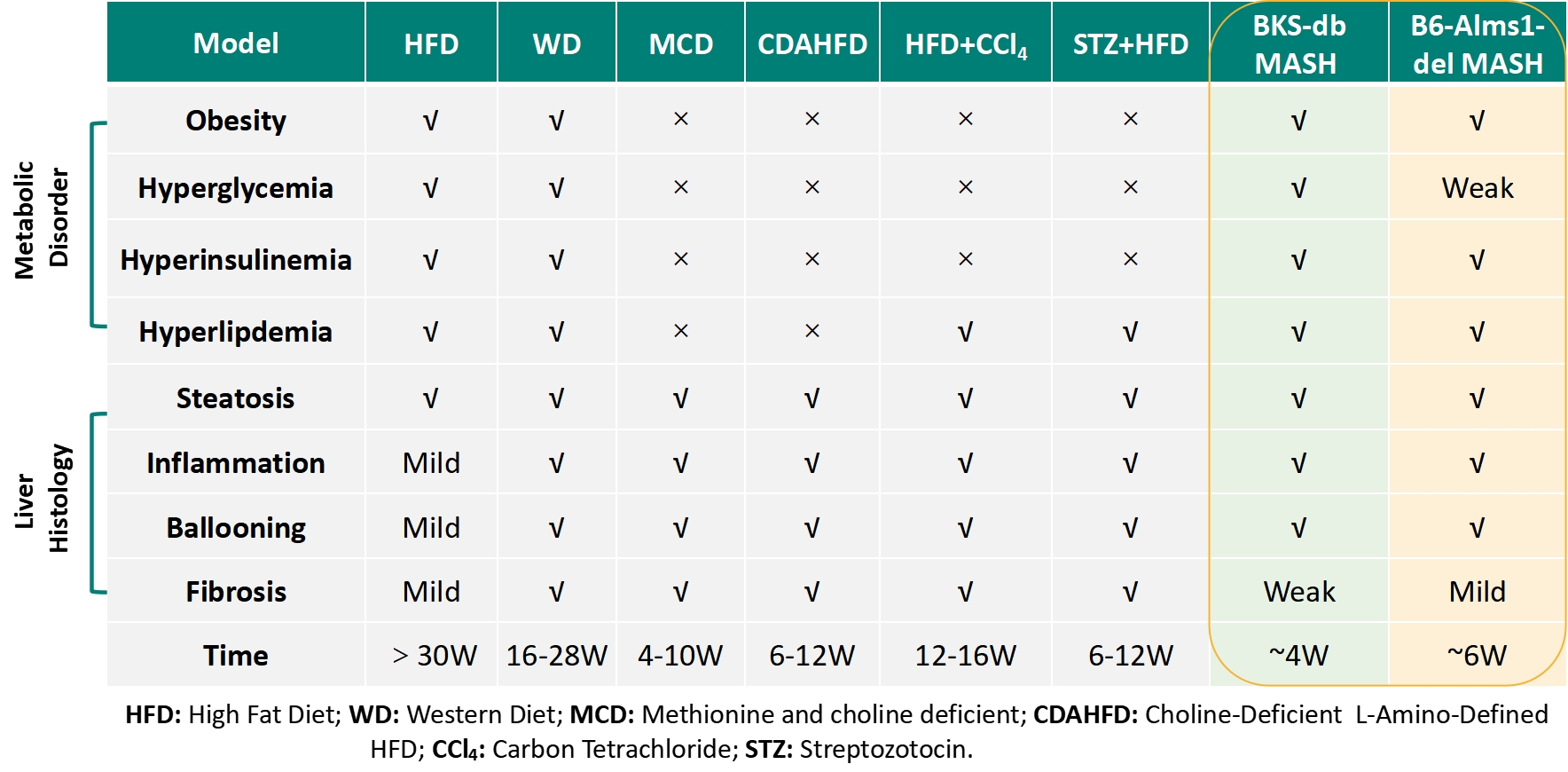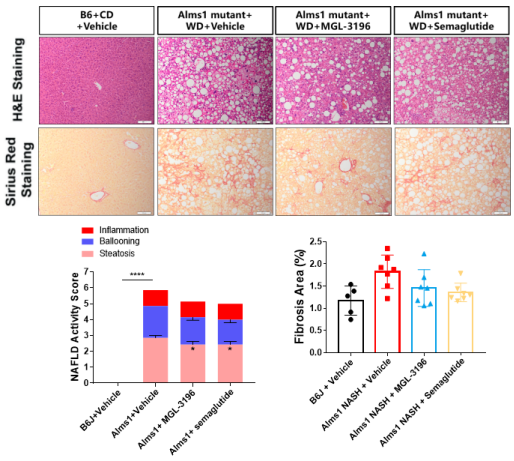Metabolic dysfunction-associated steatotic liver disease (MASLD) is a condition in which excess fat accumulates in the liver of patients with no history of alcoholism. Metabolic dysfunction-associated steatohepatitis (MASH) is a more severe form of MASLD, which manifests as liver steatosis and is accompanied by intralobular inflammation, hepatocellular ballooning, and even fibrosis. Preclinical studies using animal models are indispensable for developing novel anti-MASH drugs. GemPharmatech has developed a series of diet- or genetic mutation-induced MASH mouse models for preclinical drug efficacy tests.

Suggested Model: B6-Alms1-del MASH
ALMS1 is a gene connected with human Alström syndrome, and mutations/deletions in this gene are linked to metabolic disorders such as childhood obesity, developmental delay, hyperlipidemia, cardiomyopathy, and type II diabetes. Using gene editing technology, GemPharmatech induced an 11-bp base deletion in a specific sequence of exon 8 of the murine-derived Alms1 gene, resulting in premature termination of mouse Alms1 gene translation and generating an Alms1 mutant mouse model with a combined phenotype of obesity, diabetes, and MASLD. When fed a conventional diet (CD), it develops obesity and moderate hyperglycemia with age and progressively increases hyperlipidemia and liver damage. The Western diet (WD) accelerated the development of metabolic disorders and liver damage. In comparison to the BKS-db MASH model, the B6-Alms1-del MASH model has moderate liver fibrosis and can be used to evaluate the therapeutic efficacy of anti-MASH medicines on liver fibrosis.
Case application
After 6 weeks of Western diet induction, B6-Alms1-del mice were randomly divided into 3 groups based on ALT index, and the solvent, MGL-3196, and semaglutide were administered to each group, respectively, with the Western diet to evaluate drug efficacy in the mice. B6J mice were given solvent and CD as a vehicle group.

MGL-3196 and Semaglutide ameliorated the steatosis and fibrosis phenotypes of B6-Alms1-del mice and lowered the disease score to some degree.
● Genetically Engineered MASH Mouse Models
Strain No. | Strain Name | Strain Type | Description |
KO | C57BLKS/JGpt mice lacking the Lepr gene develop severe morbid obesity, significant and persistent increase in blood glucose, islet damage and atrophy, severe insulin resistance, severe diabetic nephropathy, and diabetic retinopathy. These mice are ideal models for studying Type II diabetes and related complications. | ||
KO(TM) | An 11-bp base deletion in exon 8 of the Alms1 gene in C57BL/6JGpt mice led to early termination of translation of the Alms1 gene, leading to a combined phenotype of obesity, early diabetes and metabolic dysfunction-associated steatotic liver disease. These mice are ideal models for studies on obesity and fatty liver. |
● MASH Rat Model
In addition to these mouse models, GemPharmatech has also successfully developed a MASH rat model.

